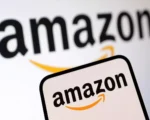Digital Collectibles Revolution: Mercedes-Benz Integrates In-Car NFT Gallery, Tapping into the Web3 Community’s Investment Appeal
In a bold and artistic move, German luxury carmaker Mercedes-Benz has taken a stance on the controversial Web3 sector by incorporating a digital gallery showcasing non-fungible tokens (NFTs) as part of its operating system revamp. NFTs, built on blockchains, are digital collectibles with underlying values, making them attractive investment items for members of the Web3 community. These digital assets can be inspired by a range of elements, including artworks, cartoons, game characters, or imaginative creations.
Unveiling its next-generation Mercedes-Benz Operating System (MB.OS) at the Consumer Electronics Show (CES) in Las Vegas, the automaker introduced significant changes to its in-car entertainment offerings. Among these updates, the dashboard now features a new app named ‘MBUX Collectibles.’ This app enables users of Mercedes-Benz cars to explore NFTs associated with the brand.

Notably, the company had previously released its second NXT Icons NFT collection, consisting of 18,860 digital collectibles, and these items will be showcased in the car’s NFT gallery. This move by Mercedes-Benz reflects an innovative approach to blend automotive technology with the growing trend of digital collectibles within the Web3 space.
The first ever NFT collection from Mercedes-Benz debuted in April last year, and it was named ‘Maschine’. NFTs from this series will also be featured in the revamped dashboard. Hoping to connect with a younger generation of customers, the German luxury car brand has been trying to establish itself as a pro-Web3 brand for a while now.
Apart from NFTs, Mercedes-Benz had inked a sponsorship deal with the FTX crypto exchange in September 2021. The partnership automatically fell apart after the FTX exchange collapsed last year and ended up filing for bankruptcy. Not just NFTs and crypto exchanges – the company has also taken into conscience, the use of blockchain in its operations. In 2020, the company piloted a blockchain project to track the amount of CO2 emissions triggered by its cobalt supply chain.


















